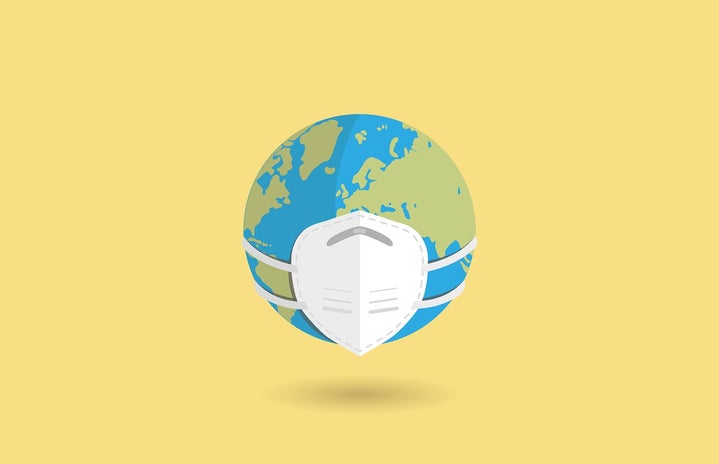Obviously, masks have become a lot more widely used since COVID-19 hit the market. While I don’t think I would have considered it unusual to see prior to our current plague, seeing people just walking down the street wearing medical looking face coverings has not only become the norm, but the only safe and acceptable way to move through our current world. What I see day to day changes drastically, branching from N95, to disposable masks, to DIY artsy creations made with cute fabric, to last minute shirts pulled up desperately to cover the mouth and nose. The way they are generally worn also seems to differ, my personal favorite being when I see someone wearing their mask (which is good) but it being placed well below their nose (which is less good and, quite frankly, defeats the point of wearing one entirely).
As different as all these masks may look, they are mostly worn for the same purpose of attempting to prevent the spread of disease. However, it got me thinking of the other reasons why masks may have been worn and the historical significance that many of them have. After doing some research, I came to a general understanding that there are three or so general groupings of why masks have been worn, religious or cultural reasons, welfare or protection, fashion, and health.
- Cultural and Religious Significance
-
One of the earliest recorded face masks in our history dates back to the 6th century BC. Images of people wearing a cloth over their mouths were found inside of a Persian Tomb. In ancient China, during the Yuan Dynasty, many historians believe that servers would wear silk scarves over their faces in order to avoid disturbing the emperor’s food. According to the Global Times, in the 14th century, the Black Death was an example of mask-wearing for sanitary reasons, very similar to that of today. Clearly, masks have been around for centuries, and the current use is a reemergence, rather than a new thing.
Masks have also been shown to have a huge cultural and religious significance, often being used in ceremonies to further a culture’s traditions. According to Britannica, many secret societies (commonly found in Africa) would wear colorful and beautifully made masks to either protect the spirit or represent a cultural role, such as symbolizing sanction and control. Many of these masks were painted in specific shades to change their use and meaning. Britannica also states that the Northwest Coast Indians created mechanical masks that moved, using it under the belief that it would assist in fusing human and animal spirits together as they acted out entire legends. Similar but slightly different, masks have also been used historically for festive uses: helping people celebrate occasions such as Halloween, Mardi Gras, or other such holidays.
- Functionality
-
Masks have also been widely used for purely functional reasons beyond just that of the current pandemic. During WW2, everyone in Britain was provided a gas mask to protect them from gas bombs dropped during air raids. However, many of these masks were not very well made and didn’t help much (similarly to wearing a medical mask under your nose, in regards to Corona).
- “Face Mask Culture”
-
It also stands that “face mask culture” has been and is much more common in the East than the West, and the adjustment to our new mask-wearing world has much made much easier on them due to this. This is for several reasons. According to Madeline Jung of Voanews, masks serve as a sense of security, not only protecting but also hiding the face. In South Korea and China, wearing masks is much more common simply due to the micro dust and pollution levels in the air. In addition to this, there have also been trends among South Korean culture where younger people were wearing face masks just on their chins, especially popular among high school students. In this way, face masks were also seen as a fashion trend and not purely just for the wearers’ protection. This has made the increase in mask-wearing (for protection) slightly easier of an adjustment for these countries as it was already ingrained in the culture.
All in all, I felt that my curiosity about the history and general use of masks beyond our pandemic was well-founded and productive. As much as I would prefer we not have to wear them, it was interesting to know that there’s so much more to masks and how they have been worn than just angry political refusals, uncomfortable temperatures made more uncomfortable and constantly breathing in recycled air.



